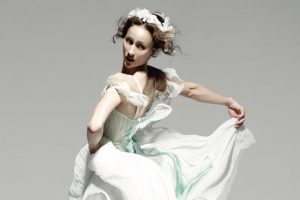
Young Talent Festival 2019, Symposium
Exposure, Access and Opportunity: Exploring the Cultural Barriers to Ballet Training
London, Linbury Theatre, Royal Opera House
1 July 2019
www.roh.org.uk
mobballet.org
It was quite a strenuous afternoon for all concerned but, in what turned out to be a powerful and provocative discussion, it was also revelatory. After introductions, the Young Talent Festival 2019 Symposium began with a brief film, shot before The Royal Ballet embarked on its foreign tour (they are still away at the time of writing). Interviews with a handful of very talented, successful dancers who are deemed to have come from ‘different’ or ‘difficult’ backgrounds proved that when it comes to the crunch, it is the person and the dancer that we see, not the tough starts in life or the colour of their skin. The dancers were Matthew Ball, Mayara Magri, Francesca Hayward, Marcelino Sambé and Joseph Sissens. Kevin O’Hare then talked about the diversity of race within the company (27 different nationalities currently). O’Hare is good at giving his dancers opportunities to shine and perhaps The Royal Ballet is not a benchmark we can call ‘the norm’ however, there can be no doubt that at this stage in their careers, background and colour appear irrelevant to these particular individuals. However, the issue is really that, in spite of their beginnings, success has not eluded them.
The keynote speaker was former ballet dancer, Theresa Ruth Howard. She performed with Dance Theatre of Harlem and Armitage Gone! Dance, and is the founder and curator of Memoirs of Blacks in Ballet, MoBBallet, a digital platform that preserves, presents and promotes black artists in ballet. She also writes for a number of dance publications across the world including, as a regular contributor to Dance Magazine.
To observe that she is a forceful and charismatic personality is a somewhat conservative estimation of her presence. Her natural ebullience, her evident passion and knowledge on the subject of people of colour who succeed in classical ballet and the barriers which they have to cross, is wholly engaging. But the profundity and seriousness of her words did not disguise an underlying wit and humour.

© Theresa Ruth Howard. (Click image for larger version)
In the opening moments of her speech, in which she explains she works to provide insight as to what diversity, equity and inclusion really means – she adds what it feels like as “a brown body in the space of whiteness that is ballet.” She mentions that she subscribes to the principle that, “When you solve for black, you solve for everything.”
She talked in detail about three key points with relevance to the art form: Exposure; Access; Opportunity. Then gave us the analogy of ‘the guy from the pub’. You meet the guy, you date the guy and then you commit to the guy. In other words – in order to enter the world of ballet, you have to be exposed to it in the first place, then you engage and afterwards pursue opportunity. For many people of colour or disadvantaged backgrounds, ballet is simply not on the radar. She forewarns, poverty may take away the power of choice. Also that ballet is its own greatest barrier [to changing and moving forward].
She puts it out there that the very nature of ballet breeds a certain kind of individual: a sense of constant inadequacy, necessary competition, insecurity, low self-esteem and that it requires dedication by self-sacrifice: not eating properly, dancing with injury and emotional abuse. Anything less than a fast, upward trajectory is perceived as failure. By the time you exit the profession, the damage is so profound that you want to get as far away as possible. Dancers need to be nurtured and become more self-aware because it’s long term – a commitment to being willing to fail in order to succeed – all of which resonates very deeply.
Her speech was followed by a short film by Primary Steps about children having the opportunity to experience the studio environment and then an extraordinary live performance by Kele Roberson, a Royal Ballet School student, in his own choreography, Start Again. His future already looks assured – his movement style is uniquely fluid.
Next was a panel discussion: Exploring the Blockages, Stigmas and Hindrances to Ballet, comprising David Pickering, Learning and Participation Creative Associate, The Royal Ballet; Shevelle Dynott, a dancer with English National Ballet; Bim Malcomson, Chance to Dance Lead Artist; Ginny Brown, CEO, Imperial Society of Teachers of Dancing; Pippa Cobbing, Primary Steps Manager, The Royal Ballet School and Fleur Derbyshire-Fox, Engagement Director, English National Ballet. It was Dynott who, in just a few sentences, with great charm and honesty, seemed to reflect the thoughts of Howard. He is a product of the Chance to Dance experience. Chance to Dance is led by Royal Opera House Learning and Participation. It gives primary school children their first opportunity to participate and engage creatively with ballet. In its 28th year, it has worked with over 30,000 children.
Dynott regaled how he had discovered ballet via this project, while growing up in Brixton and what had inspired him the most was watching a black man lifting a white woman above his head. He simply wanted to be able to do that. He described the experience as one for the whole family and how his Dad was there with him, more excited than he was. His candid telling of his journey from Brixton, to Royal Ballet School, to English National Ballet was disarmingly uncontrived and heartwarming.
David Pickering drew interestingly on the difference in cultures and expectations prompted by his recent experience in Japan, with the Royal Ballet. He points out that ballet dancers in Japan are not paid for their hard labours as the art form is seen as a hobby! This, in spite of the fact that the Japanese are absolutely crazy, in the extreme, about ballet. And yet in Russia, ballet is considered a vocation of the highest order and dancers are treated with the utmost respect and remunerated accordingly.
The second half of the Symposium began with a panel that focused on the Culture of Training and included Laura Nicholson, Head of Children and Young People’s Dance, One Dance UK; Jessica Wheeler, Principal, Elmhurst Ballet School; Gerard Charles, Artistic Director, Royal Academy of Dance; Liz Foster, Chance to Dance Lead Artist; Karen Berry, Teacher Training Manager, The Royal Ballet School and Pearl Chesterman, Director of Engagement and Participation, Birmingham Royal Ballet. The emphasis in this discussion was on students having ‘a voice’ throughout the pipeline, the training process and professional career development. With greater access to health and well-being, as well as a much better awareness of mental health issues that are rife in the 21st century, it was rather shocking to hear Wheeler tell us of a former student who went to work abroad, but had the presence of mind to return home after being subjected to an artistic director who carried around a set of weighing scales like a handbag, regularly humiliating her dancers by publicly weighing and slating them! Such practices should be illegal.
Conversations were had about the narrow, myopic outlook in the dance world, the lack of broader career advice. Charles pointed out that dancers who teach at the end of their careers because they don’t know what else to do, generally have had useful life skills ingrained in them which can be used in many different areas – they have drive, creativity and are good at problem solving.
Much later in the afternoon we watched a film made by Chance to Dance. The father of a child who was clearly thriving in this learning and participation environment, and who had never been exposed to ballet, says when asked what he thought, “What is ballet? It’s good for the soul.” Nailed it!
Howard once again insisted that there was no right or wrong to these discussions but that we needed to be open to change in order to enable students to cultivate mental fortitude. One comment particularly stands out in my mind. She talked about ‘bunheads’, an affectionate term that has been used for decades within the industry and refers to classical ballet dancers who are so dedicated to their chosen profession that they eat, sleep and breathe ballet. Howard asks us to imagine what it’s like to want to be a ‘bunhead’ if your hair is a mass of tiny black curls that will not easily go into a bun. A poignant reminder of our insular mindset which needs to be immediately addressed. An absolutely fascinating event, thought provoking and informative. One hopes the Royal Opera House – and many other institutions – consider working together to raise awareness of the need for nurture and inclusiveness.

















You must be logged in to post a comment.